Posts tagged teaching
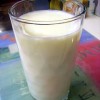
Evolution – Got Milk?
Feb 17th
After asking students during a lesson on mutations if it is possible that a mutation in DNA could be good, most students will nod yes without much understanding. Recently, I finally had one student raise his hand immediately and answer the question (with extreme surprise that no other students were blurting out the answer)…”evolution!” He was able to make the connection between changes in DNA that are building up over time, and how that change can possibly make that organism better in some way. If it helps the survival of an organism, that mutation is going to stick around and More >
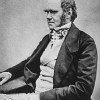
Can I Teach That?
Sep 21st
Recently I worked with a group of graduate students who volunteered to be science mentors for students in New York City. They were being trained in a small set of hands-on labs designed to introduce genetics in an engaging, informal environment. At some point during the training, we touched upon genetic mutations and variation. I mentioned that it was a perfect segway into discussion of natural selection and evolution. One participant raised her hand and asked, “Are we allowed to teach that?” My initial response was surprise. I said, “Of course!” It is unfortunate though, that as science educators we should even More >
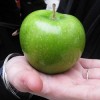
Staying Positive in the Classroom
Jan 6th
I normally approach each lesson as though I am about to perform on stage. If I am feeling agitated or unhappy I force myself to push aside those feelings and show my excitement about the topic we are about to discuss. I have noticed that lately I have been stuck in a state of boredom when it comes to teaching. I have tried various tricks to get myself out of the rut. Thinking about the needs of the students and why I love teaching seems to help me the most.
I have to remind myself that the students I work with have a lot More >

Christmas Tree Science
Dec 21st
We have several holiday traditions at my house, which include baking cookies, decorating the house, and of course the tree. I have a love-hate relationship with my Christmas tree every year. Not a holiday season goes by without me cursing the tree and its insidious needles throughout the house. Oh, and don’t forget the ornaments that the dog just can’t keep out of her mouth. But the smell of the tree is all I need to get in the holiday spirit!
Interestingly enough, the Spruce, a very common Christmas tree species, has seven times more DNA than a human. How is that, you More >
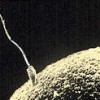
Some Cells Have 23 Chromosomes
Nov 25th
It is a game of chance! With one spin of a wheel, X and Y chromosomes, represented by pink (X) and green ping-pong balls (Y), are passed from each parent to a child. When the wheel stops, the baby is either a boy or a girl – depending on which chromosomes were inherited. It is a simple, yet powerful tool that demonstrates basic chromosomal inheritance. It is easy to see that every time the wheel is spun, there is a 50/50 chance of having a boy or a girl.
Demonstrations with this wheel have led to some very interesting student responses and questions. I have More >

Forensics in the classroom
Nov 23rd
It is important as teachers to incorporate subject matter that is of interest to your students. This will get them more excited about the process of learning. Recently, I have seen an ever growing interest in forensic science, with the help of the media. This offers valuable teaching opportunities. Almost every student that I have encountered has seen at least one episode of CSI or Law & Order.
So how can you take this material from the television screen into the classroom? Using the applications of DNA testing alone can provide you with a wide range of lessons, including the use of DNA More >
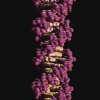
Passing on Genes and Traits
Sep 9th
Why do you look the way you do? There are many ways to answer this question, but essentially it all comes down to the information in your DNA and the proteins your cells make. Your DNA contains genes that code for proteins. Different proteins have different functions, each contributing to your various traits and functions.
Why do we often see similar traits among parents and offspring? We inherit our DNA from our mother and father. This means we have half of our genes, or recipes, from our mom and half from our dad. Even with this basic idea, it can be More >

Teaching Genetics: Simplicity for Success
Sep 2nd
I love to talk about the biology behind how life works with other people. Some of the best conversations I have ever had have been with fifth graders learning about DNA. I am amazed that they know an incredible amount of information relating to genetics, way more than I ever knew when I was their age.
I currently teach genetics and molecular biology to middle school students, high school students, teachers, and the general public. One of the greatest skills I have learned in my current position is the importance of engaging your audience and making the material you are introducing More >

Do Genes Always Follow the Rules?
Aug 31st
As a teacher, I find that the presentation of classical Mendelian inheritance is important, but can be misleading. Do genes always follow the rules that the “Father of Genetics” observed in his garden? Don’t get me wrong, I appreciate Mendel and his contribution to genetics, but the exceptions seem much more interesting!
For example, many genes are pleiotropic, meaning they affect more than one phenotype. How about the recent development on red heads and anasthetics? I happen to live with a red head, from a long line of red heads, so in our family this was a topic of discussion for days. The mutation More >
